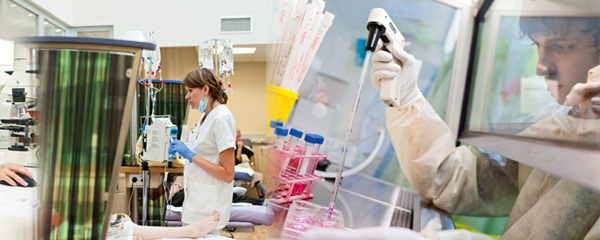The pancreas, which belongs to the digestive system, is a gland located behind the stomach that produces:
- pancreatic juice that neutralises the acidity of the alimentary bolus of the stomach and participates in the digestion of certain nutriments;
- insulin and glucagon, two hormones that regulate blood sugar.
Most of the time, cancer of pancreas is an adenocarcinoma. Often diagnosed very late, this tumour is hard to treat as it is located in a part of the body very difficult for surgical access, and it is relatively insensitive to chemotherapy.
Researchers at Inserm have recently discovered that it is the cells composing the fibrous casing of the tumour that decrease the efficacy of classical drugs and have obtained promising results through tests with an inhibitor of the signalling pathway responsible for the formation of this envelope, SOM203*.
*C. Duluc et al. Pharmacological targeting of the protein synthesis mTOR/4E-BP1 pathway in cancer-associated fibroblasts abrogates pancreatic tumour chemoresistance. EMBO Mol Med, Apr. 2015

